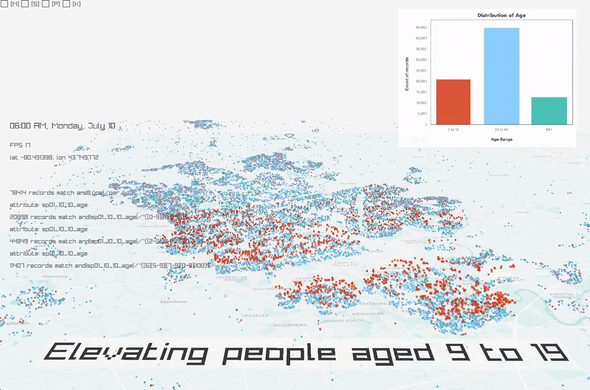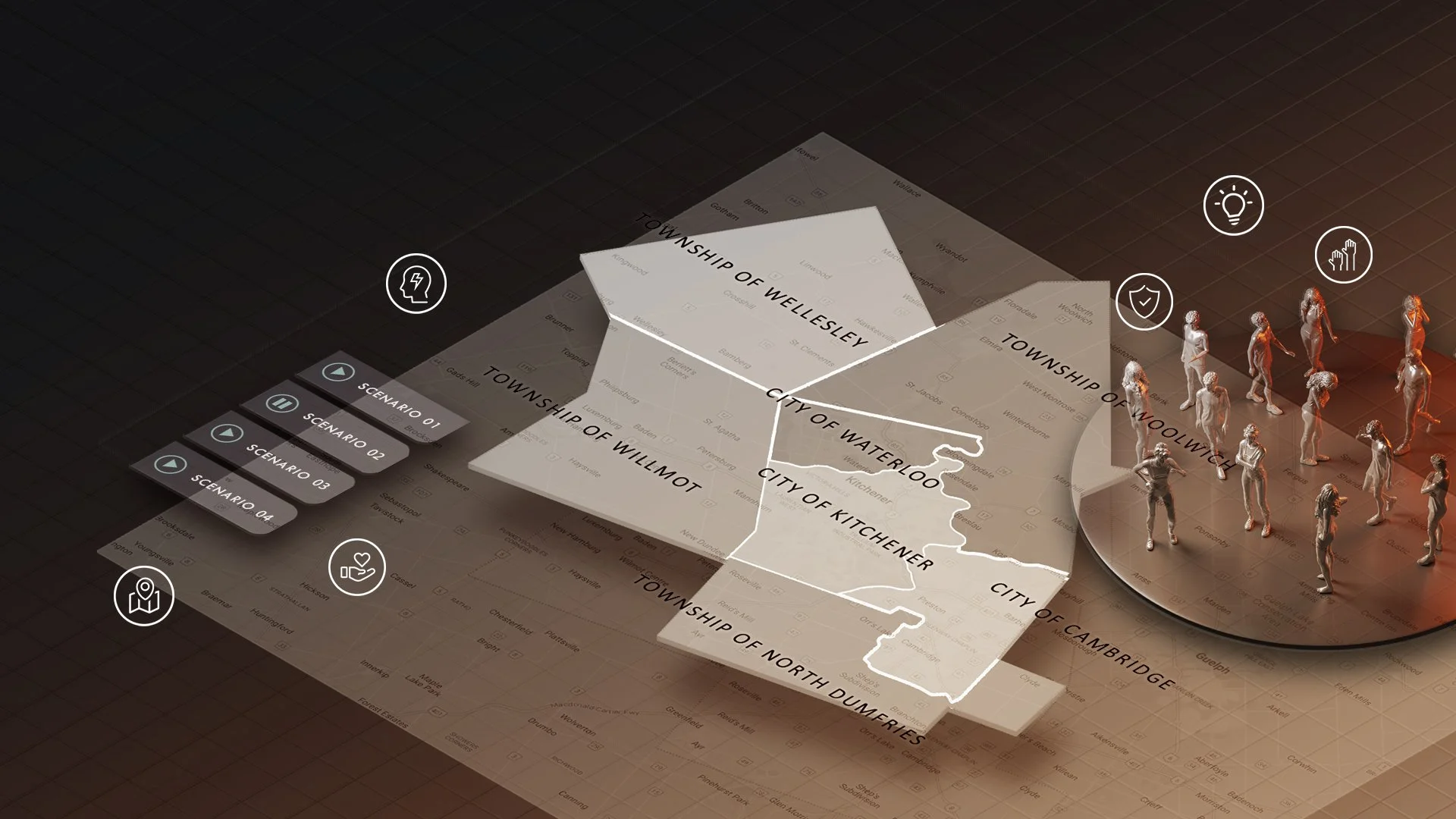Making the Invisible, Visible
An invaluable aspect of Synthetic Twin technology is its ability to make the invisible visible. Take something conceptual, such as youth's Sense of Belonging. How would you quantify it? How could you poll a population consisting of difficult-to-access demographics? But it’s important to quantify: Youth Sense of Belonging is an indicator for measuring a community’s connectedness and social health. Improved belonging can impact everything from classroom attendance and graduation rates to talent retention, which in turn contributes to measures like a region’s future GDP.
Generating the Youth of Synthetic Waterloo
RUNWITHIT Synthetics was tasked to generate and survey the Synthetic Population of youth in the Waterloo Region to quantify and sandbox Sense of Belonging. To that end, we generated 190,000 unique Synthetic Individuals between infancy and 18 years of age. We quantified Sense of Belonging according to three categories: economic, social and environmental, each of which had numerous contributing factors. From there, we could poll and survey this population with a 100% response rate, allowing us to capture valuable information and insights that would normally go unseen in traditional or historic datasets derived from a smaller sample of potential respondents.
Running Scenarios in the Sandbox
After quantifying the Sense of Belonging according to social, environmental and economic factors, we surveyed our Synthetic Youth with a 100% response rate, capturing even invisible and hard-to-reach demographics.
Scenario 1 showed how increasing proximity to parks and support systems improved environmental and social belonging scores for youth, with the greatest impact seen in urban centers.
And Scenario 2, devised by the youth themselves? 1,000s of new transit riders, and a staggering 7.6% moving from a weak to a strong sense of belonging.
That means thousands of students potentially showing improved school attendance and more active social participation; these kids are more likely to become productive, well-adjusted, and happy adults who choose to build their lives and livelihoods in the Waterloo Region.
This is how Synthetic Twins can be used to sandbox policy options and dial forward scenarios to optimize and envision futures that are resilient, healthy, and safe.






